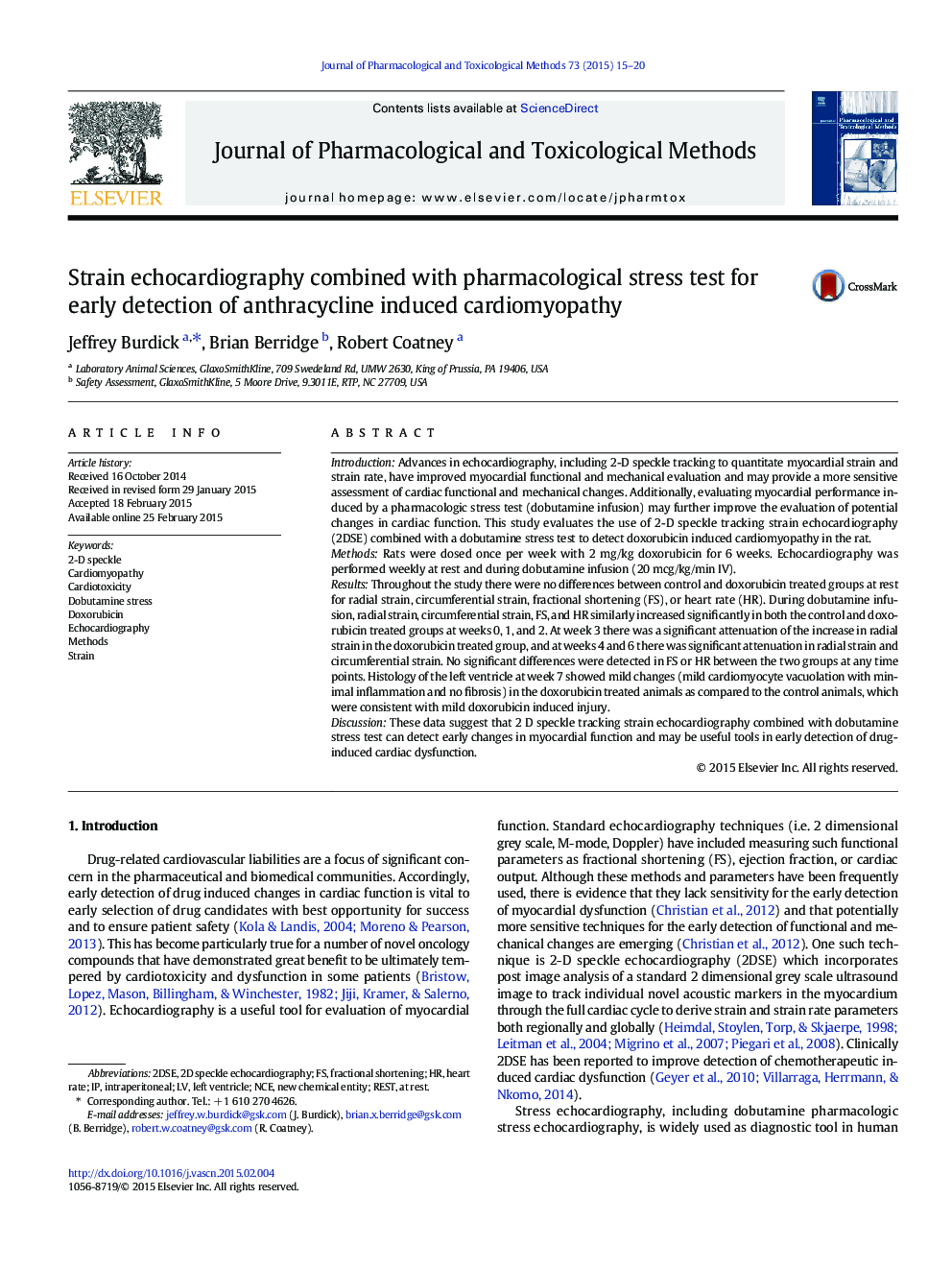| Article ID | Journal | Published Year | Pages | File Type |
|---|---|---|---|---|
| 2549034 | Journal of Pharmacological and Toxicological Methods | 2015 | 6 Pages |
IntroductionAdvances in echocardiography, including 2-D speckle tracking to quantitate myocardial strain and strain rate, have improved myocardial functional and mechanical evaluation and may provide a more sensitive assessment of cardiac functional and mechanical changes. Additionally, evaluating myocardial performance induced by a pharmacologic stress test (dobutamine infusion) may further improve the evaluation of potential changes in cardiac function. This study evaluates the use of 2-D speckle tracking strain echocardiography (2DSE) combined with a dobutamine stress test to detect doxorubicin induced cardiomyopathy in the rat.MethodsRats were dosed once per week with 2 mg/kg doxorubicin for 6 weeks. Echocardiography was performed weekly at rest and during dobutamine infusion (20 mcg/kg/min IV).ResultsThroughout the study there were no differences between control and doxorubicin treated groups at rest for radial strain, circumferential strain, fractional shortening (FS), or heart rate (HR). During dobutamine infusion, radial strain, circumferential strain, FS, and HR similarly increased significantly in both the control and doxorubicin treated groups at weeks 0, 1, and 2. At week 3 there was a significant attenuation of the increase in radial strain in the doxorubicin treated group, and at weeks 4 and 6 there was significant attenuation in radial strain and circumferential strain. No significant differences were detected in FS or HR between the two groups at any time points. Histology of the left ventricle at week 7 showed mild changes (mild cardiomyocyte vacuolation with minimal inflammation and no fibrosis) in the doxorubicin treated animals as compared to the control animals, which were consistent with mild doxorubicin induced injury.DiscussionThese data suggest that 2 D speckle tracking strain echocardiography combined with dobutamine stress test can detect early changes in myocardial function and may be useful tools in early detection of drug-induced cardiac dysfunction.
